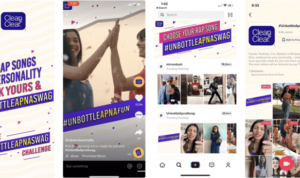Social Media Branding sets the stage for businesses to shine in the digital world, showcasing their unique identities and captivating audiences with engaging content and strategic storytelling. From defining the essence of branding to exploring successful strategies, this journey is all about making a mark in the online realm.
Importance of Social Media Branding
Social media branding is the process of creating a unique identity for a business on social media platforms. It involves consistently representing the brand’s values, personality, and offerings to build recognition and trust among the target audience. This is crucial for businesses in today’s digital age as social media has become a powerful tool for connecting with customers, increasing brand visibility, and driving sales.
Examples of Successful Social Media Branding Strategies
- Starbucks: By creating visually appealing and engaging content on platforms like Instagram, Starbucks has successfully built a strong brand presence and loyal following.
- Nike: Nike’s powerful storytelling and inspirational messaging on social media have helped them connect with their audience on a deeper level, driving brand loyalty and advocacy.
- Apple: Through a consistent visual aesthetic and innovative product launches on platforms like Twitter and YouTube, Apple has maintained its position as a leading tech brand globally.
How Social Media Branding Builds Brand Awareness and Loyalty
Social media branding plays a key role in building brand awareness by reaching a wider audience and engaging with customers in real-time. By consistently sharing valuable content, responding to comments, and showcasing the brand’s unique personality, businesses can create a strong emotional connection with their audience, leading to increased loyalty and customer retention.
Creating a Strong Brand Identity on Social Media: Social Media Branding

Building a strong brand identity on social media is crucial for businesses to stand out and connect with their target audience. It involves a combination of visual elements, messaging, and storytelling that resonate with followers and potential customers.
Elements of a Strong Brand Identity
- Consistent Visuals: Use the same color palette, logo, and design elements across all platforms to create a cohesive look.
- Authentic Voice: Develop a unique tone and language that reflects your brand’s personality and values.
- Engaging Content: Share relevant, high-quality content that aligns with your brand and resonates with your audience.
- Community Interaction: Engage with your followers, respond to comments, and build relationships to foster brand loyalty.
Maintaining Consistency Across Platforms
- Create a Style Guide: Develop guidelines for visuals, messaging, and tone to ensure consistency.
- Use Templates: Design templates for posts, stories, and other content to maintain a cohesive look.
- Cross-Promote: Share content across different platforms to reinforce your brand identity.
- Monitor Analytics: Track performance metrics to see what resonates with your audience and adjust accordingly.
Role of Storytelling in Brand Identity
Storytelling is a powerful tool for creating a compelling brand identity on social media. It allows you to connect with your audience on a deeper level, evoke emotions, and differentiate your brand from competitors. By sharing stories that resonate with your audience and communicate your brand values, you can build a strong and memorable brand identity that stands out in a crowded digital landscape.
Engaging Content Strategies for Social Media Branding
In the world of social media branding, creating engaging content is crucial to capturing the attention of your audience and building a loyal following. By sharing different types of content that resonate with your target market, you can effectively establish your brand identity and connect with your followers on a deeper level.
Visual Content
Visual content, such as photos, videos, and infographics, tends to perform exceptionally well on social media platforms. People are naturally drawn to visuals, making them highly shareable and engaging. Popular brands like Nike and Starbucks use visually stunning content to showcase their products and tell compelling stories, effectively capturing the interest of their audience.
User-Generated Content
User-generated content, which includes posts, reviews, and testimonials created by your customers, is another powerful strategy for social media branding. Encouraging your followers to share their experiences with your brand not only increases engagement but also builds trust and credibility. Brands like GoPro and Airbnb leverage user-generated content to showcase authentic interactions with their products and services.
Interactive Content
Interactive content, such as polls, quizzes, and contests, is a great way to engage your audience and encourage participation. By creating fun and interactive experiences for your followers, you can drive up engagement levels and foster a sense of community around your brand. Companies like Sephora and Wendy’s use interactive content to spark conversations and keep their audience actively engaged.
Behind-the-Scenes Content, Social Media Branding
Sharing behind-the-scenes content gives your audience a glimpse into the inner workings of your brand, creating a sense of transparency and authenticity. Brands like Glossier and Tesla provide sneak peeks into their creative processes, product development, and company culture, allowing followers to connect with the human side of their brand.
Leveraging Influencers and User-Generated Content

Influencers and user-generated content play a crucial role in boosting social media branding efforts. By collaborating with influencers and incorporating user-generated content, brands can enhance their reach, credibility, and engagement with their target audience.
Benefits of Influencers in Social Media Branding
- Increased Reach: Influencers have a dedicated following that trusts their recommendations, allowing brands to tap into new audiences.
- Authenticity: Influencers can provide authentic endorsements of products or services, leading to increased credibility for the brand.
- Engagement: Collaborating with influencers can drive higher levels of engagement with the brand’s content and offerings.
- Brand Awareness: Influencers can help raise brand awareness and visibility in a crowded social media landscape.
Benefits of User-Generated Content in Branding Strategies
- Trust and Credibility: User-generated content is seen as more authentic and trustworthy by consumers, helping to build brand credibility.
- Cost-Effective: User-generated content is often created for free by customers, saving on production costs for branded content.
- Community Building: Encouraging user-generated content creates a sense of community around the brand, fostering loyalty and engagement.
- Diverse Perspectives: User-generated content provides a variety of viewpoints and experiences, enriching the brand narrative.
Best Practices for Collaborating with Influencers and Encouraging User-Generated Content
- Identify the Right Influencers: Choose influencers whose values align with your brand and whose audience matches your target demographic.
- Establish Clear Guidelines: Provide influencers with clear guidelines on how to represent your brand to ensure consistency and authenticity.
- Incentivize User-Generated Content: Offer incentives such as contests, discounts, or shoutouts to encourage customers to create content for your brand.
- Engage with User-Generated Content: Show appreciation for user-generated content by reposting, liking, and commenting on posts, fostering a sense of community.





